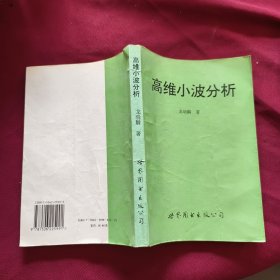
基于计数过程的统计模型(英文版)
¥ 28 2.4折 ¥ 116 八五品
仅1件
湖北仙桃
认证卖家担保交易快速发货售后保障
作者O.Borgan,et al 著;P.K.Andersen
出版社世界图书出版公司
出版时间1998-08
版次1
装帧平装
上书时间2024-12-20
- 在售商品 暂无
- 平均发货时间 9小时
- 好评率 暂无
- 最新上架
商品详情
- 品相描述:八五品
图书标准信息
- 作者 O.Borgan,et al 著;P.K.Andersen
- 出版社 世界图书出版公司
- 出版时间 1998-08
- 版次 1
- ISBN 9787506238175
- 定价 116.00元
- 装帧 平装
- 开本 其他
- 纸张 胶版纸
- 页数 767页
- 【内容简介】
- One of the most remarkable examples of fast technology transfer from new developments in mathematical probability theory to applied statistical methodology is the use of counting processes, martingales in continuous time, and stochastic integration in event history analysis. By this (or generalized survival analysis), we understand the study of a collection of individuals, each moving among a finite (usually small) number of states. A basic example is moving from alive to dead, which forms the basis of survival analysis. Compared to other branches of statistics, this area is characterized by the dynamic temporal aspect, making modelling via the intensities useful, and by the special patterns of incompleteness of observation, of which right-censoring in survival analysis is the most important and best known example.
- 【目录】
-
Preface
I. Introduction
I.1 General Introduction to the Book
1.2 Brief Survey of the Development of the Subject
1.3 Presentation of Practical Examples
II. The Mathematical Background
II.1 An Informal Introduction to the Basic Concepts
II.2 Preliminaries: Processes, Filtrations, and Stopping Times
II.3 Martingale Theory
II.4 Counting Processes
II.5 Limit Theory
II.6 Product-Integration and Markov Processes
II.7 Likelihoods and Partial Likelihoods for Counting Processes
II.8 The Functional Delta-Method
II.9 Bibliographic Remarks
III. Model Specification and Censoring
III.1 Examples of Counting Process models for Complete Life
History Data. The Multiplicative Intensity Model
III.2 Right-Censoring
III.3 Left-Truncation
III.4 General Censorship, Filtering, and Truncation
III.5 Partial Model Specifi ation. Time-Dependent Covariates
III.6 Bibliographic Remarks
IV. Nonparametric Estimation
IV.1 The Nelson-Aalen estimator
IV.2 Smoothing the Nelson-Aalen Estimator
IV.3 The Kaplan-Meier Estimator
IV.4 The Product-Limit Estimator for the Transition Matrix of a
Nonhomogeneous Markov Process
IV.5 Bibliographic Remarks
V. Nonparametric Hypothesis Testing
V.1 One-Sample Tests
V.2 k-Sample Tests
V.3 Other Linear Nonparametric Tests
V.4 Using the Complete Test Statistic Process
V.5 Bibliographic Remarks
VI. Parametric Models
VI.1 Maximum Likelihood Estimation
VI.2 M-Estimators
VI.3 Model Checking
VI.4 Bibliographic Remarks
VII. Regression Models
VII.1 Introduction. Regression Model Formulation
VII.2 Semiparametric Multiplicative Hazard Models
VII.3 Goodness-of-Fit Methods for the Semiparametric
Multiplicative Hazard Model
VII.4 Nonparametric Additive Hazard Models
VII.5 Other Non-and Semi-parametric Regression Models
VII.6 Parametric Regression Models
VII.7 Bibliographic Remarks
VIII. Asymptotic Efficiency
VIII.1 Contiguity and'Local Asymptotic Normality
VIII.2 Local Asymptotic Normality in Counting Process Models
VIII.3 Infinite-dimensional Parameter Spaces: the General Theory
VIll.4 Semiparametric Counting Process Models
VIII.5 Bibliographic Remarks
IX. Frailty Models
IX.1 Introduction
IX.2 Model Construction
IX.3 Likelihoods and Intensities
……
X. Multivariate Time Scale
Appendix
References
Author Index
Subject Index
点击展开
点击收起
— 没有更多了 —


















以下为对购买帮助不大的评价